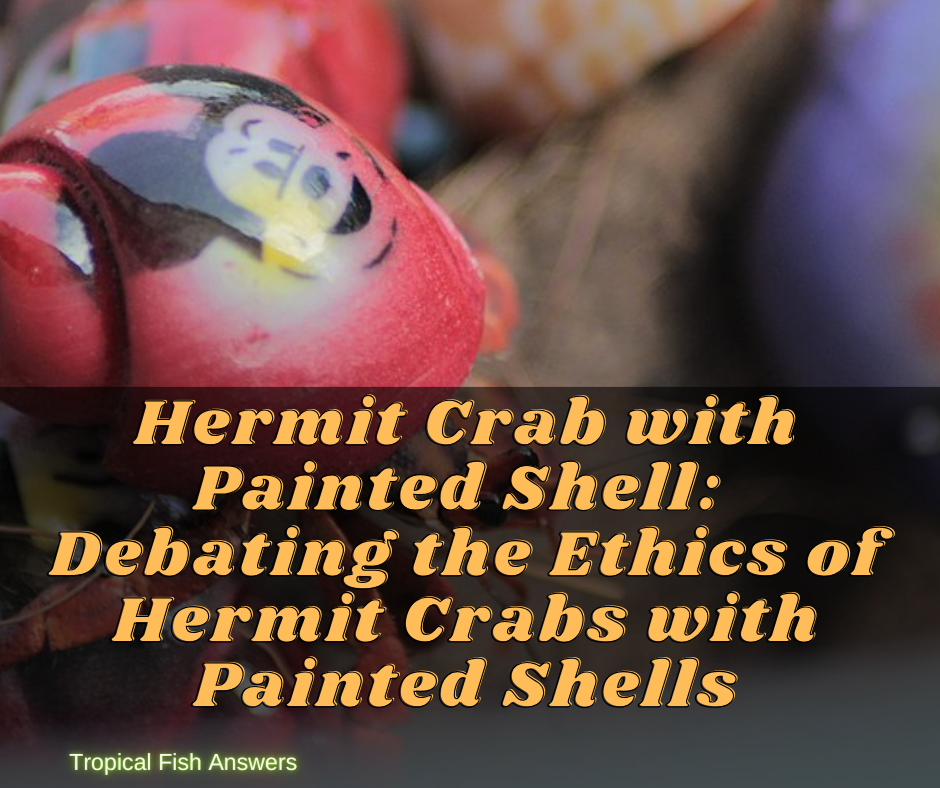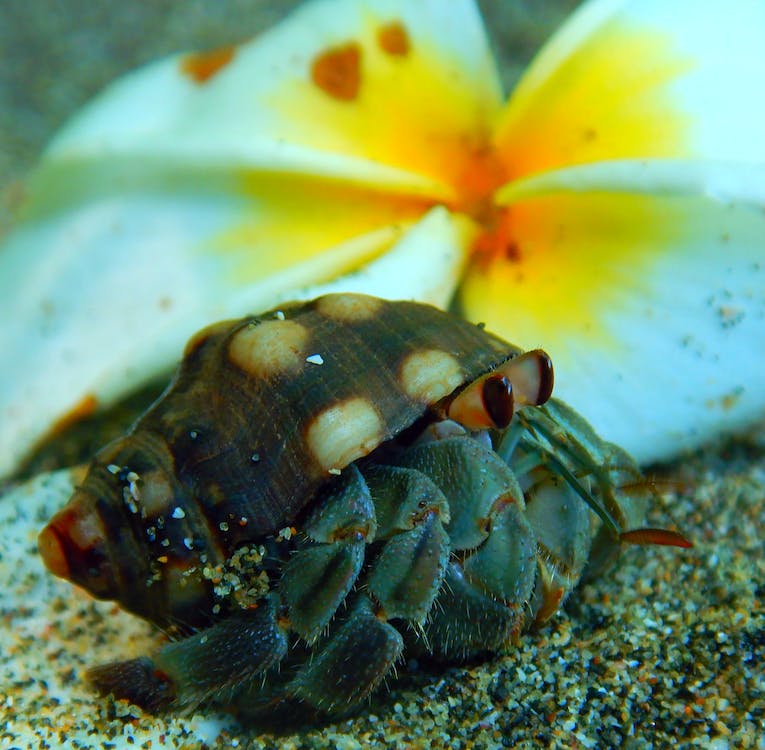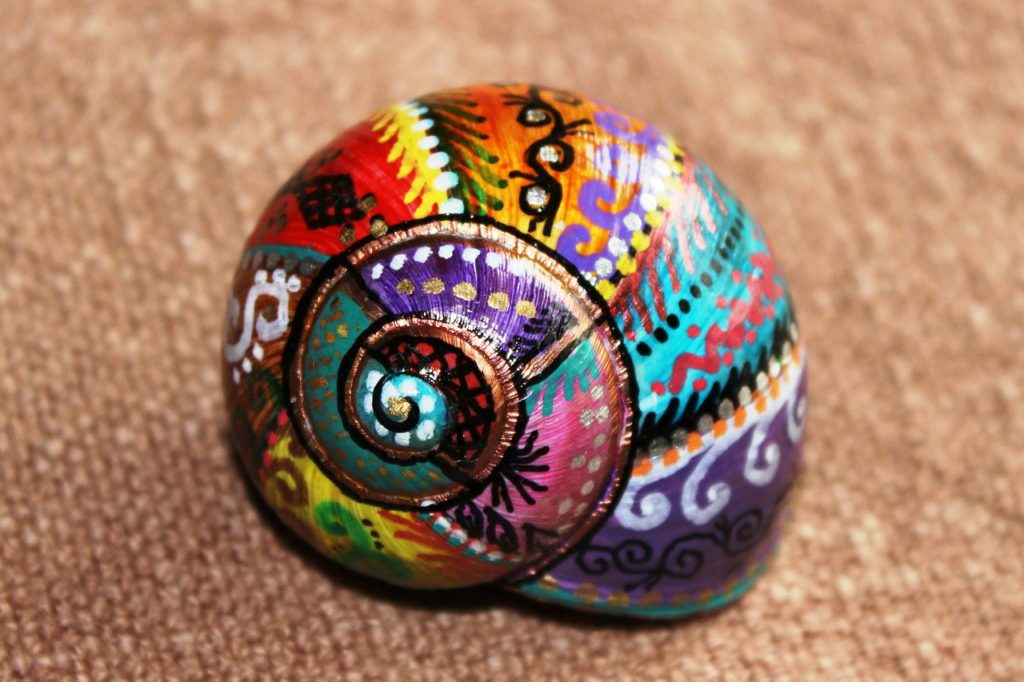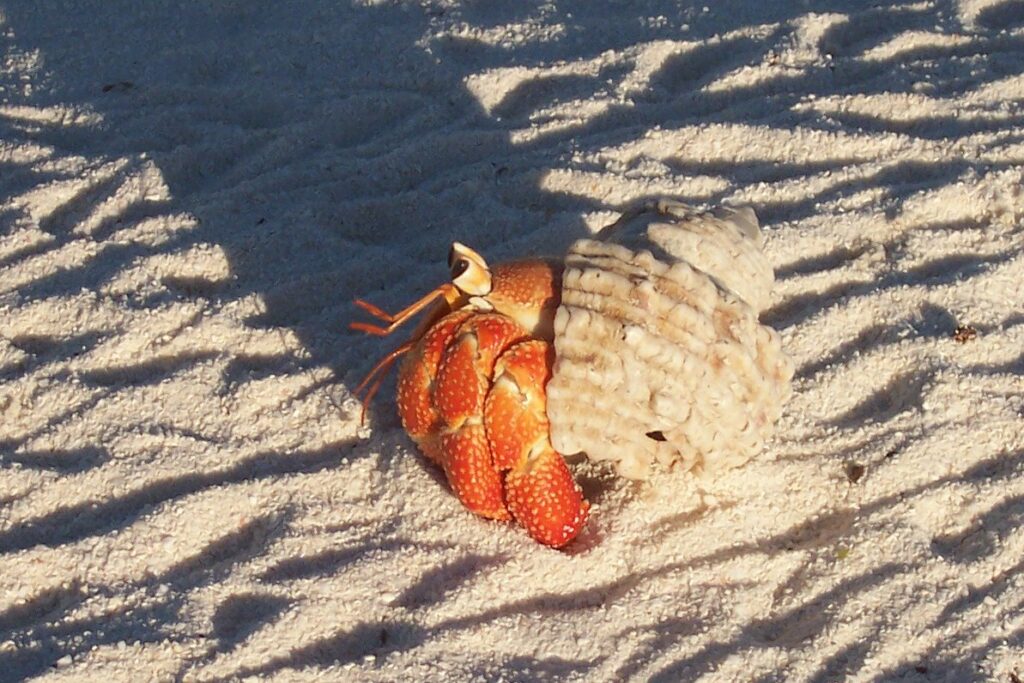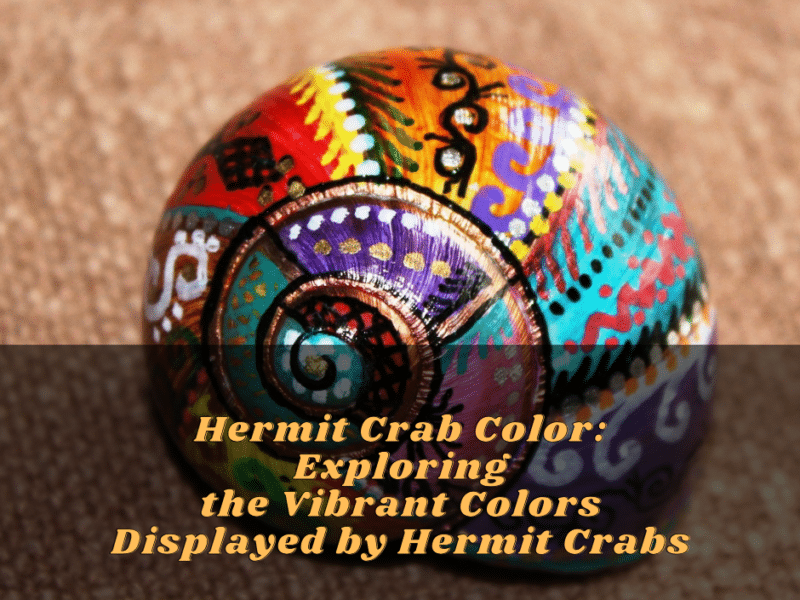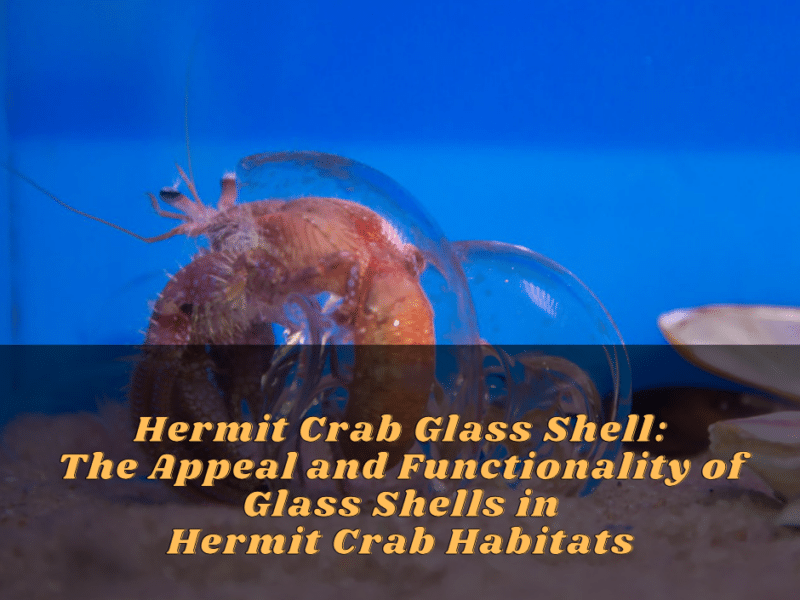Introduction
Hermit crabs are fascinating creatures that have become popular pets due to their unique and charming characteristics. One aspect of hermit crab ownership that has sparked debate is the practice of painting their shells. This issue raises ethical concerns as it involves altering the natural appearance of these animals for aesthetic purposes. This article will discuss the popularity of hermit crabs as pets and delve into the controversy surrounding painted shells.
The Popularity Of Hermit Crabs As Pets
Hermit crabs have gained popularity as pets due to their small size, low maintenance requirements, and interesting behavior. They are often chosen as pets for children or for individuals living in small apartments or dormitories where space is limited. With their vibrant personalities and ability to interact with their surroundings, hermit crabs can be entertaining companions.
One of the most intriguing aspects of hermit crab ownership is their shells. These fascinating creatures do not have a rigid exoskeleton, so they rely on salvaging empty shells to protect their soft abdomen. As they grow, hermit crabs need to find larger shells to accommodate their expanding bodies. This natural process not only offers insight into their growth but also makes for an engaging experience for pet owners.
Hermit Crab with Painted Shell – The Issue Of Painted Shells
The practice of painting the shells of hermit crabs has become a contested issue among animal welfare advocates, pet owners, and conservationists. Painted shells are often sold in pet stores or markets as a way to make hermit crabs more visually appealing or to cater to specific aesthetics. However, this raises ethical concerns as it interferes with the natural state of these animals.
One primary concern is the potential harm caused to the hermit crabs. The paint used on the shells can contain toxic substances that may be harmful if ingested or absorbed through the crab’s exoskeleton. Additionally, the paint may interfere with the crab’s ability to sense their environment through their shell, affecting their well-being and potentially leading to stress or health issues.
Furthermore, painting shells can disrupt the natural behavior of hermit crabs. These creatures rely on their shells to camouflage and protect themselves from predators. By altering the shell’s appearance, the hermit crab may face increased vulnerability in the wild or have difficulty adapting to new shells. This can impact their survival chances and overall welfare.
Apart from the potential harm to the hermit crabs themselves, there is also a broader conservation concern. For many species of hermit crabs, finding suitable shells is already a challenge due to habitat destruction and pollution. By removing shells from the wild and painting them for commercial purposes, the availability of suitable shells for hermit crabs in their natural environment is further diminished, potentially leading to population decline.
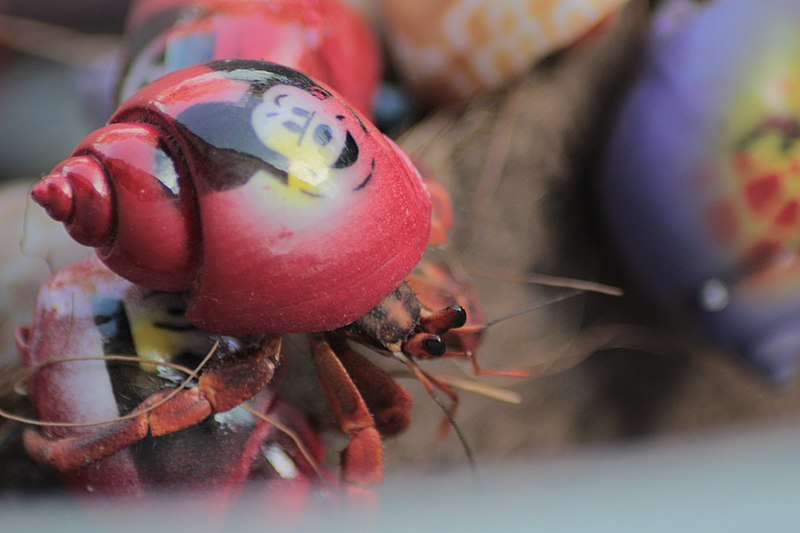
In response to these ethical concerns, many animal welfare organizations promote the adoption of natural, unpainted shells for hermit crabs. They emphasize the importance of providing appropriate living conditions and promoting the well-being of these creatures rather than focusing solely on aesthetics.
In conclusion, the popularity of hermit crabs as pets has brought attention to the controversial issue of painted shells. While they may enhance the visual appeal of these creatures, the ethical concerns surrounding painted shells cannot be overlooked. The potential harm to the hermit crabs, disruption of their natural behavior, and negative impact on conservation efforts raise important questions that pet owners and society as a whole should consider. By promoting the use of natural shells and providing suitable living conditions, we can ensure the well-being of these fascinating creatures while appreciating their unique characteristics in their natural state.
Ethics Of Painted Shells
Wild Hermit Crabs And The Use Of Painted Shells
The practice of painting the shells of hermit crabs has sparked considerable debate around the world. While some see it as a harmless form of expression or a way to enhance the visual appeal of these creatures, others question the ethics behind altering the natural appearance of these animals.
One of the main concerns is the potential harm caused to the hermit crabs themselves. The paint used on the shells can contain toxic substances that may be harmful if ingested or absorbed through the crab’s exoskeleton. These chemicals can disrupt their delicate internal systems and lead to severe health issues or even death.
Furthermore, painting the shells can interfere with the crab’s ability to sense and interact with their environment. Hermit crabs rely on their shells not only for protection but also for camouflage. By altering the shell’s appearance, the hermit crab may become more visible to predators or face difficulties in adapting to new shells. This can significantly impact their survival chances and overall well-being.
Another aspect to consider is the impact on wild hermit crab populations. Many species of hermit crabs struggle to find suitable shells due to habitat destruction, pollution, and other environmental factors. By removing shells from their natural habitats and painting them for commercial purposes, the availability of suitable shells for hermit crabs in the wild is further diminished. This can have serious consequences for their population levels and ecosystem dynamics.
Impact On A Much-needed Natural Resource
The issue of painted shells also raises concerns about the conservation and sustainability of a valuable natural resource. Suitable shells are essential for hermit crabs to survive and grow. By removing shells from the wild and using them for commercial purposes, the availability of these shells for hermit crabs in their natural habitat is significantly reduced.
Additionally, the demand for painted shells in the pet trade and tourist markets contributes to the overall depletion of suitable shells for wild hermit crabs. This further exacerbates the challenges these animals face in finding appropriate shelter and protection.
Furthermore, the global trade in painted shells can also lead to the degradation of coastal habitats. The pressure to collect shells to meet market demands can result in increased habitat destruction, such as the destruction of mangroves or coral reefs, which are crucial ecosystems for many species, including hermit crabs.
To address these ethical concerns, many animal welfare and conservation organizations advocate for the use of natural, unpainted shells for hermit crabs. They emphasize the importance of providing suitable living conditions and promoting the well-being of these creatures based on their natural behaviors and needs. This approach focuses on creating a sustainable environment for hermit crabs, both in captivity and in the wild, while appreciating their unique characteristics in their natural state.
In conclusion, the ethics of painted shells for hermit crabs are a contentious topic that raises important questions about animal welfare and conservation. The potential harm to the hermit crabs themselves, the disruption of their natural behavior, and the negative impact on wild populations all highlight the need for careful consideration when it comes to altering the appearance of these animals. By promoting the use of natural shells and providing suitable living conditions, we can ensure the well-being of these fascinating creatures while respecting their natural habitat and species conservation.
Safety Concerns Of Painted Shells
Hermit Crab Behavior And Shell Modification
The practice of painting the shells of hermit crabs has sparked considerable debate around the world. While some see it as a harmless form of expression or a way to enhance the visual appeal of these creatures, others question the ethics behind altering the natural appearance of these animals.
One of the main concerns is the potential harm caused to the hermit crabs themselves. The paint used on the shells can contain toxic substances that may be harmful if ingested or absorbed through the crab’s exoskeleton. These chemicals can disrupt their delicate internal systems and lead to severe health issues or even death.
Furthermore, painting the shells can interfere with the crab’s ability to sense and interact with their environment. Hermit crabs rely on their shells not only for protection but also for camouflage. By altering the shell’s appearance, the hermit crab may become more visible to predators or face difficulties in adapting to new shells. This can significantly impact their survival chances and overall well-being.
Potential Risks Of Ingesting Paint
Another safety concern of painted shells is the potential for hermit crabs to ingest the paint. Hermit crabs are known to explore their environments by touching and even tasting objects around them. If the painted shell is toxic, the hermit crab may unknowingly consume the harmful substances through licking or biting the shell.
The ingestion of paint can have detrimental effects on the hermit crab’s health. Toxic chemicals can cause damage to their internal organs, disrupt their digestive system, and lead to toxicity-related symptoms. In some cases, it can even be fatal.
It is essential to consider the long-term effects of ingesting paint on hermit crabs. Accumulation of toxins in their bodies can have lasting consequences, compromising their overall health and well-being.
To mitigate these risks and ensure the safety of hermit crabs, animal welfare and conservation organizations advocate for the use of natural, unpainted shells. By providing suitable living conditions and promoting the use of safe shells, we can protect these creatures from potential harm.
In conclusion, the ethics of painted shells for hermit crabs raise important safety concerns. The potential harm to the hermit crabs themselves, such as disruption of their behavior and the risks of ingesting toxic paint, highlight the need for careful consideration when it comes to altering the appearance of these animals. By promoting the use of natural shells and providing suitable living conditions, we can ensure the well-being of these fascinating creatures while respecting their natural habitat and species conservation.
Alternatives To Painted Shells
Importance Of Using Natural Shells
When it comes to hermit crabs and their shells, natural is always the best option. Using natural shells for hermit crabs offers several important benefits. First and foremost, natural shells are free from any potentially harmful substances that can be found in painted shells. This ensures the safety and well-being of the hermit crabs, protecting them from ingesting toxic substances that can have detrimental effects on their health.
Natural shells also provide a more suitable environment for hermit crabs. These shells have evolved specifically for the needs of hermit crabs, offering the perfect shape, size, and texture for them to inhabit. By using natural shells, you are providing hermit crabs with a habitat that closely mimics their natural environment, allowing them to engage in their natural behaviors and thrive.
Furthermore, using natural shells promotes conservation and sustainability. By collecting and using natural shells instead of painted shells, you are not contributing to the capture and alteration of hermit crabs for the purpose of creating decorative shells. It is important to respect and protect these creatures and their natural habitats, and using natural shells is a step towards achieving this.
Benefits Of Providing A Variety Of Shell Options
In addition to using natural shells, it is important to provide hermit crabs with a variety of shell options. Hermit crabs are known to switch shells as they grow, and having a diverse range of shells available ensures that they can find the perfect fit at each stage of their development.
Offering a variety of shell options also promotes the well-being and health of hermit crabs. Different shells may have different shapes, sizes, and textures, allowing hermit crabs to choose the shell that best suits their needs and preferences. This can help prevent shell-related issues such as shell binding, where a hermit crab has difficulty exiting its current shell or finding a new shell to inhabit.
Furthermore, providing a variety of shell options encourages natural behavior and exploration. Hermit crabs are naturally curious creatures and enjoy exploring their environment. By offering a selection of shells, you are giving them the opportunity to engage in natural behaviors such as investigating and selecting new shells. This can help keep them mentally stimulated and physically active, promoting their overall well-being.
In conclusion, using natural shells and providing a variety of shell options are important alternatives to painted shells for hermit crabs. Natural shells offer safety, suitability, and conservation benefits, ensuring the well-being of these fascinating creatures. By offering a diverse range of shells, you are promoting natural behaviors and providing hermit crabs with the opportunity to thrive. By choosing alternatives to painted shells, you are making a positive impact on the lives of hermit crabs and respecting their natural habitat and species conservation.
Conclusion
In conclusion, branding plays a vital role in differentiating your business from the competition and staying relevant in today’s market. It goes beyond a catchy slogan and a logo; it encompasses the development of a strong and reliable brand identity that resonates with your target audience. By showcasing your unique values, story, brand promise, and other assets, you can set yourself apart from competitors and create a point of difference.
To effectively brand your business, it is crucial to develop a clear brand strategy that aligns with your target market and consistently communicates your values. Building a strong online presence and delivering exceptional customer experiences are also essential in creating a recognizable and trustworthy brand. By investing in consistent branding efforts, you can make your brand more memorable and influence customer engagement and buying decisions.
Several successful examples of branding include companies like Apple, Nike, and Coca-Cola. These brands have effectively communicated their values, unique selling propositions, and quality through consistent messaging and captivating visual identities. By studying these examples, you can gain inspiration and insights into how branding can elevate your business.
In a world where competition is fierce, branding is no longer an option but a necessity. It helps you stand out, build trust, and create lasting connections with your customers. By investing in branding, you are investing in the future success of your business.
The Ethical Debate Around Hermit Crabs With Painted Shells
The use of painted shells for hermit crabs has sparked an ongoing ethical debate among animal advocates and pet owners alike. While these shells may appear visually appealing and decorative, the practice raises significant concerns about the well-being and welfare of these fascinating creatures.
One of the primary ethical concerns stems from the potential health risks that painted shells pose to hermit crabs. The paint used on these shells may contain harmful substances, such as toxic chemicals or heavy metals, that can be ingested by the crabs. The ingestion of these substances can lead to various health issues and even death. Therefore, using natural shells that are free from potentially harmful substances is of utmost importance for the safety and welfare of hermit crabs.
In addition to health risks, the use of painted shells also raises questions about the manipulation and alteration of hermit crabs for the sake of aesthetics. Hermit crabs rely on their shells for protection, as they use them as their homes. The act of painting these shells involves capturing and handling the crabs, which can cause stress and harm to the creatures. It is crucial to respect and protect the natural behaviors and habitats of these animals by using alternative options that prioritize their well-being.
Moreover, using painted shells perpetuates the demand for commercially altered shells, which often involves sourcing shells from their natural habitats. This practice can disrupt ecosystems and contribute to the decline in hermit crab populations. By choosing natural shells or providing a variety of suitable shell options, pet owners can help promote conservation and sustainability by avoiding the demand for altered shells.
In conclusion, the use of painted shells for hermit crabs raises significant ethical concerns regarding the health and well-being of these creatures. By opting for natural shells and providing a variety of suitable shell options, pet owners can ensure the safety and happiness of hermit crabs while promoting ethical practices and conservation efforts. It is important to prioritize the welfare of these fascinating creatures and respect their natural habitats.
FAQ: Debating the Ethics of Hermit Crabs with Painted Shells
1. What is the controversy surrounding hermit crabs with painted shells?
The controversy surrounding hermit crabs with painted shells stems from the method in which these crabs end up in these shells. The shells are typically collected from the ocean by workers, who then paint them and sell them with “pet” crabs. This practice deprives wild hermit crabs of their natural homes, which are already in short supply. It has been dubbed the “hermit crab housing crisis.”
2. Can hermit crabs take up residence in each other’s shells?
Yes, hermit crabs do take up residence in each other’s shells. It has been observed that they engage in a phenomenon known as a “vacancy chain.” This is an organized method of exchanging resources where individuals benefit by claiming a more desirable possession abandoned by another individual.
3. How can studying hermit crabs’ behavior help us improve resource distribution among ourselves?
Researchers have discovered that hermit crabs, and possibly other animals, use vacancy chains to obtain better resources. By studying how these animals behave, scientists can gain insights into how we can distribute resources, such as apartments, cars, and jobs, more efficiently among ourselves. This research may lead to more effective systems for allocation and management of resources.
4. Why is it unethical to manipulate hermit crabs for research purposes?
While researchers can ethically manipulate groups of hermit crabs in ways that cannot be applied to people, it is important to consider ethical concerns when conducting research on animals. It is crucial to ensure the well-being of the hermit crabs and minimize any potential harm or discomfort caused during the research process. Ethical guidelines and considerations are necessary to prevent unnecessary suffering or distress.
5. What can we do to address the hermit crab housing crisis?
To address the hermit crab housing crisis, it is crucial to promote ethical practices and raise awareness about the impact of collecting shells from the ocean. Supporting organizations and initiatives that aim to conserve natural habitats for hermit crabs and other marine life is also vital. Additionally, avoiding purchasing hermit crabs with painted shells can help reduce the demand for these products and discourage the continuation of this controversial practice.
Please note that this information is based on online data and should not be considered as professional, scientific advice.
